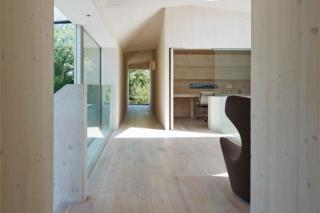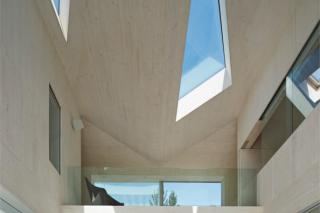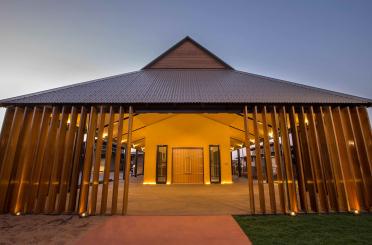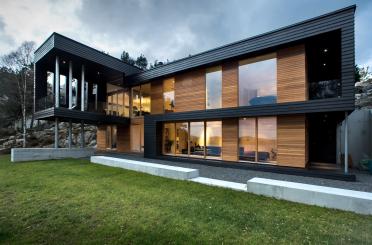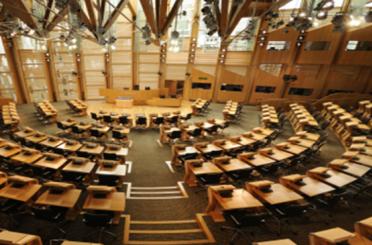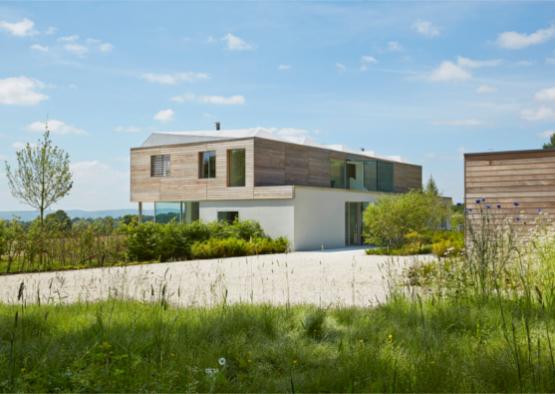
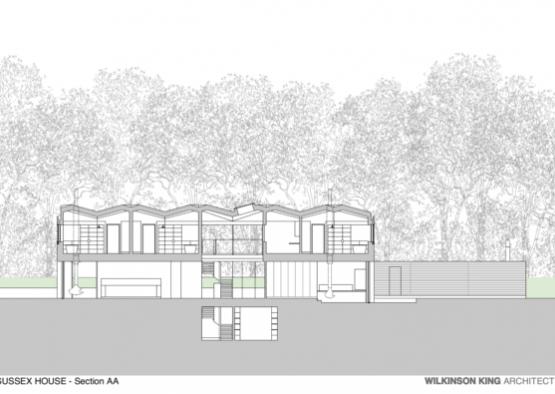
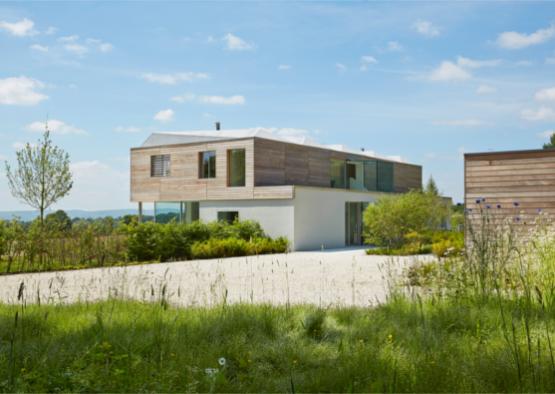

Overview
Overlooking sweeping views to the Sussex South Downs, this house is composed of a series of layers, which echo the horizontality of the meadows and hills.
The brief was for a contemporary house that would sit and weather well in the landscape, and respond materially to the tree-lined site and rural setting. There are four bedrooms (one at ground level) and a study, which overlooks a double-height reception space.
The first floor construction is entirely of cross-laminated timber. The roof is made from tilted triangular planes, forming a folded, undulating surface inspired by the form of distant hills.
An ancillary building in the arrival courtyard houses a biomass boiler, which provides the heating and hot water. The house, flanked by a formal garden and a wildflower meadow, is built to high environmental performance standards. It replaces a 1950s cottage on the 12 ha site.
Architect Julian King says the clients wanted a contemporary building that truly engaged with and responded to the rural landscape, using natural materials that would sit well in the context.
Written by Tony Neilson, former publisher of timber+DESIGN magazine.
Structure
More than 140 CLT panels form the entire super-structure, walls and roof of the first floor. Mimicking the distant hills, the roof is designed to be an undulating surface formed from a series of 28 triangular pieces. The roof and floors are entirely self-supporting.
The CNC cutting technologies of the CLT production deliver excellent dimensional stability, allowing the panels to be shaped and the edges chamfered so they come together forming a continuous soffit with no visible joints.
Wall panels are made of three layers of solid spruce boards (94mm overall) and the roof panels are 145mm thick and made up of five layers. They are also the finished surface of the interiors, giving a warm and tactile quality to the bedrooms and circulation spaces. The timber has been ‘treated’ with a transparent white lacquer to prevent yellowing over time. The use of CLT meant this element of the design was built in 10 days.
The solid timber acts as a heat sink – evening out the internal temperature and also the moisture content of the air. The stair, from basement to first floor, is formed using a metal frame and clad with spruce to match the CLT panels. The treads are open and cantilevered to make the stair as transparent as possible.
Exterior
The entire first floor is clad with western red cedar. The untreated cedar soon ages to become silver, matching the bark on the trees surrounding the building.
The best visual grade of cedar was selected to avoid knots. It is tongue-and-grooved and fixed horizontally in 2.4m lengths, stacked one above the other. There is a 10mm gap between the boards, giving a rhythm to the facades and allowing for expansion and easy maintenance as necessary.
The boards are fixed to treated battens using stainless steel annular ring nails. The facade was carefully detailed to avoid any protruding elements such as windowsills, which would create water run-off and cause staining of the timber.
A timber rain-screen has a waterproof layer behind it. Windows and louvered shutters are designed to slide behind the timber cladding.
All the timber is FSC/PEFC/CSA/SFI certified. CLT supplier KLH says a cubic metre panel will remove about 0.8 tonnes of CO2 and lock in 240-250kg of carbon. The adhesive used in the cross-lamination process is fully solvent- and formaldehyde-free.
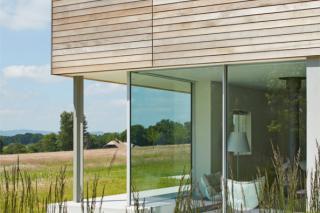
Interior
Architect King says an over-sailing wide first floor corridor is animated by tilted ceiling planes, creating a ripple effect and a feeling of momentum towards views to the east and west through large windows at either end.
Glazed surfaces at the edges of the ground floor provide views from the open living area and the enclosed master bedroom. These spaces are shaded by the timber-clad first floor, designed to ‘hover’ above the glass surfaces.
The upper storey also accommodates three bedrooms beneath the faceted ceiling. Each bedroom has an en-suite contained within CLT walls that don't reach all the way to the ceiling, leaving a glazed gap that lets light creep through.
A cantilevered wooden staircase connecting the entrance level with both the basement and a study on the first floor creates a continuity of material across the various levels and is enclosed in a glass box. The double-height void and staircase effortlessly orchestrate the house, organising a contiguous open plan and cellular spaces into a simple but elegant arrangement.
European oak engineered floorboards feature in the first floor circulation spaces and office.
